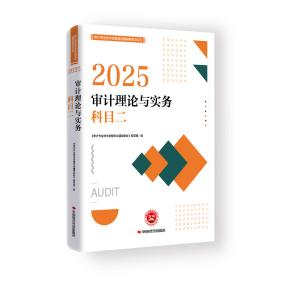ACCA备考指导:Topic E Audit Evidence
Audit evidence is necessary to support the audit opinion; the auditors therefore need to obtain sufficient, relevant and reliable evidence to satisfy the mselves that the objectives of the individual audit tests have been met. Once satisfied, they can arrival at the overall audit opinion in the knowledge that it can be adequately defended, if required, as all the evidence exists to prove how the opinion was arrived at.
The auditors also need to consider when planning the audit what type(s) of audit evidence will be necessary in order to ensure that this is obtained on a timely basis. Certain types of evidence (e.g. receivables circularization) needs the involvement and co-operation of others (i.e. the client and their customer). In such cases where the evidence-gathering process is lengthier, it is vital that sufficient planning is carried out.
In relation to substantive testing, we shall consider the assertions made in the financial statements by the directors. These assertions underlie all items in the financial statements, and so the auditor needs to obtain audit evidence that substantiates there assertions.
The task of answering exam questions is made easier if you can design substantive tests based on those assertions you know are important in relation to a particular balance, rather than learning general lists of tests for types of assets and liabilities.
The principles of audit evidence are equally applicable to the internal auditor, who needs to provide sufficient, reliable and relevant evidence and be able to back up audit opinions and conclusions
Auditors also obtain evidence from test of control.
Key points
1. Assertions
2. Sources, quality of different types of evidences
3. Analytical procedures
4. Audit and review of accounting estimates
5. Receivables, inventory, payables and accruals, bank and cash, tangible non-current assets and long-term liabilities
6. Audit sampling and CAAT
7. Audit for smaller entity and not-for-profit organization
The auditors also need to consider when planning the audit what type(s) of audit evidence will be necessary in order to ensure that this is obtained on a timely basis. Certain types of evidence (e.g. receivables circularization) needs the involvement and co-operation of others (i.e. the client and their customer). In such cases where the evidence-gathering process is lengthier, it is vital that sufficient planning is carried out.
In relation to substantive testing, we shall consider the assertions made in the financial statements by the directors. These assertions underlie all items in the financial statements, and so the auditor needs to obtain audit evidence that substantiates there assertions.
The task of answering exam questions is made easier if you can design substantive tests based on those assertions you know are important in relation to a particular balance, rather than learning general lists of tests for types of assets and liabilities.
The principles of audit evidence are equally applicable to the internal auditor, who needs to provide sufficient, reliable and relevant evidence and be able to back up audit opinions and conclusions
Auditors also obtain evidence from test of control.
Key points
1. Assertions
2. Sources, quality of different types of evidences
3. Analytical procedures
4. Audit and review of accounting estimates
5. Receivables, inventory, payables and accruals, bank and cash, tangible non-current assets and long-term liabilities
6. Audit sampling and CAAT
7. Audit for smaller entity and not-for-profit organization




 培训课程
培训课程














